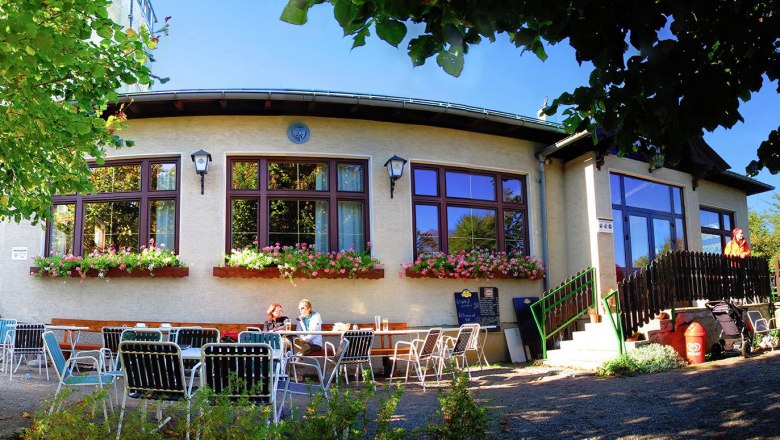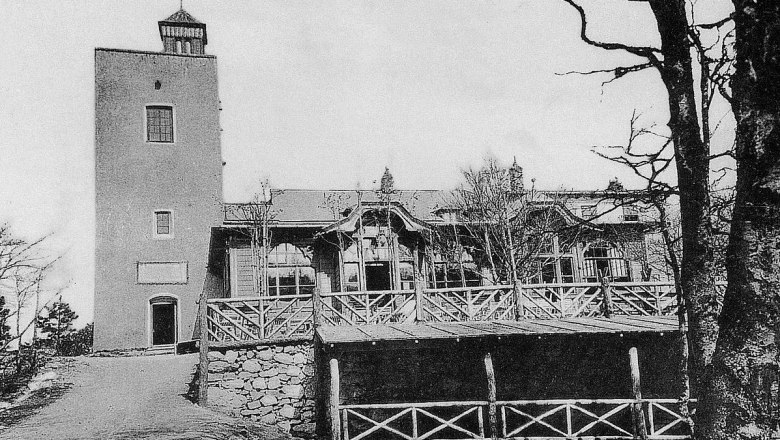Schutzhaus Eisernes Tor
Lodge / hutDescription
The Hohe Lindkogel - better known to many as the "Iron Gate" (also known as the Cold Mountain) - is one of the most visited mountains in the Vienna Woods at any time of year. The ÖTK refuge with its Sina-Warte awaits you here.
Location
The Hohe Lindkogel dominates the eastern edge of the Vienna Woods between Baden bei Wien and Bad Vöslau due to its height and expanse. On its summit stands the "Eisernes Tor" refuge of the ÖTK with the Sina-Warte, built in 1856, from which you can enjoy a magnificent panoramic view.
The history
In 1883, the plan to build a refuge, which had been pursued since 1878 but was difficult to realize due to the hostile attitude of the landowners, became a reality when the decision was made to connect the building to be erected with the Sina lookout station "by means of a smaller, low extension". The commission building negotiations took place on June 20, 1883; the shell of the Iron Gate shelter was completed in 1883, the interior work followed in 1884 and on August 3, 1884, the ÖTK shelter was ceremoniously opened with over 700 people in attendance. In 1904, the largest expansion of the shelter to date took place.
Popular excursion destinations in winter
In winter, the Iron Gate usually rises above the blanket of fog that forms in the Vienna Basin, and then you have a fantastic panoramic view from the lookout tower as far as the Little Carpathians, Vienna and the Schneeberg.
In the cold season, you can also expect to see magnificent frost formations that are a delight to the eye and the mind. Until the 1960s, the Hohe Lindkogel was even considered a ski mountain and championships were held on the descent across the Orchideenwiese to Sattelbach.
Today, tobogganing on the 4 km long forest road to Rohrbach is a popular leisure activity for young and old.
Ascents
Many hikers prefer the ascent from the Helenental valley, even though this involves the greatest difference in altitude. However, the route through the narrow limestone ditch, whose slopes are interspersed with picturesque rocks, and via the easily secured Brennersteig trail has an almost alpine character and is also extremely romantic, although you will work up a sweat. In winter, special care is required on icy paths in the Kalkgraben and on the short Brennersteig.
- from Rohrbach, Zoblhof or Vöslauer Huts: 1¼ hours
- from Augustinerhütte or Merkenstein: 1½ hours
- from Jägerhaus, Cholerakapelle: 2 hours
- from Mayerling: 2½ hours
- from Baden or Bad Vöslau: 3 hours
At the beginning of the last century, plans were made for a cable car from the Helenental valley. In 1897, there was a plan to build an electric railroad "over the Waldandacht to the Eiserne Thor" from the streetcar line leading from Baden to Vöslau, branching off at the Goldeck stop. Due to a lack of money, none of the ideas were realized. So today you have to walk or ride a mountain bike to the ÖTK refuge and the adjoining Sina-Warte on the summit of the Hoher Lindkogel.


